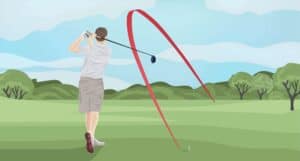The journey toward a comfortable retirement begins with timely financial planning. While various avenues can ensure a stable financial future, understanding the intricacies of retirement savings instruments and their tax deadlines is crucial. With that in mind, we’ll detail the critical timelines associated with 401(k) and SEP IRA contributions to empower individuals and businesses with knowledge that maximizes their retirement savings.

Section I: Understanding 401(k) Contribution Deadlines
Importance of Meeting Deadlines
The adage “time is money” is particularly relevant when considering retirement contributions. Fiduciaries, trusted with the task of managing others’ assets, must be diligent in ensuring timely 401(k) contributions. A delay or oversight can lead to financial penalties, stunted financial growth, and potential risks to retirement plans.
Participant Contribution Deadlines
Adherence to deadlines is crucial. Participant contributions, which include pre-tax, Roth salary deferrals, and loan repayments, must be deposited by the 15th business day of the month following their withholding. Small employers with a staff of 100 or fewer employees have the advantage of the safe harbor provision, which permits depositing participant contributions up to the 7th business day. Nevertheless, delayed deposits come with repercussions, often necessitating the replenishment of lost earnings and the potential imposition of a 15% excise tax if self-rectified.
Employer Contribution Deadlines
Employers must be meticulous in understanding deductibility and annual addition deadlines, contingent on their tax status. The implications of tardiness in these contributions can escalate quickly, ranging from IRS-mandated corrections to harsher outcomes like monetary penalties or, in extreme cases, plan disqualification.
Tax Status-Specific Deadlines
Different business structures have distinct tax deadlines:
- C-Corporation/LLC taxed as C-Corp: The deadline is April 15; an extension is permissible until October 15.
- S-Corporation/LLC taxed as S-Corp: The deadline stands at March 15 with an extension option until September 15.
- Partnership/LLC taxed as a partnership: March 15 is the last date, extendable till September 15.
- Sole Proprietorship/LLC taxed as a sole proprietor: April 15 is the cut-off, with a leeway until October 15 for extensions.
Staying Informed
Navigating these waters can be challenging. However, collaborating with a seasoned 401(k) provider can be instrumental in sidestepping pitfalls. Remember, staying on top of deadlines is not just about compliance; it’s about optimizing the growth of your investments.

Section II: Navigating the SEP-IRA Landscape
SEP-IRA Basics
A gem for the self-employed and small businesses, the Simplified Employee Pension IRA (SEP-IRA) is a haven offering tax-deductible contributions and tax-deferred growth. Its allure lies in its adaptability and significant benefits.
Contribution Limits and Deadlines for 2023
For 2023, the cap for SEP-IRA contributions is either 25% of the compensation or $66,000. Note that contributions across all employees must maintain a consistent percentage.
SEP IRA Contribution Deadlines by Entity Type:
Understanding the nuances of contribution deadlines based on different business structures ensures compliance and maximizes the benefits of a SEP-IRA. Here are the pivotal deadlines for 2024:
- Partnerships (Form 1065): The deadline for contributions is March 15th, 2024.
- S Corporations (Form 1120-S): Contributions must be made by March 15th, 2024.
- Self-Employed Individuals (Schedule C): The cut-off is April 18th, 2024. Notably, self-employed individuals file their contributions using Schedule C alongside their personal income tax return.
Staying aware of these specific deadlines ensures that businesses and individuals fully harness the benefits of their SEP-IRA without incurring penalties or missing out on potential tax advantages.
Eligibility Criteria
A hallmark of the SEP-IRA is its inclusivity. Even part-time employees can partake, provided they fulfill certain eligibility criteria. With that in mind, being proactive is very important; SEP-IRA accounts must be established by the usual tax-filing deadline or, if necessary, during the extension period.
Reporting & Tax Implications
SEP-IRA, though simplified, mirrors traditional IRA assets in tax treatment. Reporting these contributions necessitates referencing Schedule 1 and Form 1040, with an emphasis on the tax year of the SEP’s inception. Pivotal to note is the flexibility to set up a SEP for a year as late as the due date, inclusive of extensions, of the year’s business income tax return.
Consideration of Other Retirement Plans
The landscape of retirement savings can be overwhelming with the abundance of options, but you only have to find the perfect plan once. While SEP-IRAs are commendable, alternatives like 401(k)s or SIMPLE IRAs might align better with specific needs. Analyzing each plan’s pros and cons will ensure a tailored fit for your financial landscape.

Conclusion
Timely actions in the financial world often translate to financial gains and peace of mind. Recognizing and acting on the 401(k) and SEP-IRA deadlines not only ensures compliance but propels you closer to your retirement goals. Ultimately, it’s about more than dates on a calendar; it’s about safeguarding and improving your future. Be proactive, seek expert guidance, and remember, every timely step taken today amplifies the comfort of tomorrow’s retirement.
Have a great weekend!
Source: Ballentine Capital Advisors
Golf Tip of the Week
6 Simple Ways To Fix Your Slice (Quickly!)

Before Robin Symes, one of Golf Digest’s top instructors in Florida, gives you six hacks to avoid slice the next time you tee it up, it might be helpful to relize why the ball keeps peeling off to the right (or to the left if you’re swinging left-handed).
Launch monitors have verified what Robin and many top coaches have known for years. The ball will slice if the clubface is open in relation to its swing path at impact—that’s it. No matter what your swing path (in to out, out to in, square to the target, etc.) the ball will always slice if the face is open to that path. Not to geek-out on you here, but this ball-flight law is why you can hit a draw with an open clubface. To draw a ball, the face can be open to your target so long as it’s closed in relation to the path.
Now back to Robin, who is a master instructor for Golfzon Leadbetter’s HQ Academy at the Reunion Resort near Orlando. He has six simple ways to get your ball to fly straighter—or even draw. He suggests you experiment with all of them, even combine some to them, until you get the right feel to get your shots flying the way you want.
1. STRENGTHEN YOUR GRIP
From Robin: “Traditionally, a checkpoint to creating a neutral grip was to take your address, look down at your lead hand, and adjust the position so you could see two knuckles. Concepts stick and two knuckles became accepted as neutral, but I’m not sure why.
“When you let your arms hang and look down, you will probably see three or four knuckles. It’s my opinion that this is closer to a neutral grip, especially if you struggle with a slice. If you see anything less than three knuckles, regrip with your lead hand until you do. Don’t make the mistake of just rotating your hand on the handle, which might open the face. Actually regrip. It might feel like a strong position on the handle, but strong is the new neutral!”
2. CHANGE YOUR RELEASE
“If you’re slicing, your clubface is open at impact,” Symes says. “To fix this, I see a lot of players trying to close the clubface in the downswing. Unfortunately, manipulating the clubface in the downswing when things are happening so fast is very difficult, so results are often mixed.
“The secret is to forget about the downswing and instead, change your follow-through. You might think that’s too late in the swing. The ball is already gone so why bother? I’ll tell you why. Focusing on your follow-through actually cleans up a lot of mistakes in earlier parts of the swing, including an open face at impact. Finish your swing with your lead hand’s wrist bowed and your trail hand’s wrist cupped. It should feel more like the club wrapped around your body.”
3. SET YOUR EYES FOR A DRAW
“With a stronger grip and a better release, your curve should be gone,” Symes says. “But you might need help starting the ball on line, or to the other side of the target for a draw. How? Simple as this sounds, try shifting your eyes to where you want the ball to start. For a right-handed player, it would be the right side of the target for a draw. The key now is to trust your new grip and release (tips 1 an 2) when making your swing.”
4. FLIP YOUR SCRIPT
“What does every slicer do—take the club back inside the target line and then swing down on the outside,” Symes says. “When you combine this swing path with a weak grip and a poor release, the result is a guaranteed slice. The solution is to reverse this swing-path pattern. Flip the script, so to speak. Feel that your clubhead goes back outside your target line or hands, then makes a little loop as you change direction, and comes into impact inside your hands. Now, release like I taught you in tip 2 and you’ll see baby draws!”
5. CLOSE YOURSELF OFF
“Hopefully you have fixed your slice by now, but if not, these last two tips should finish the job,” Symes says. “In tip 3, I asked you to aim your eyes to the right side of the target (a right-handed player). The key to this step is to feel a similar position of your head and eyes at impact and beyond. This will help the club travel down more on the inside. With a better grip and a different release, strong draws will be the result!”
6. IF ALL ELSE FAILS, DO THIS
“Before you take your grip, close your clubface a little. When you set it down behind the ball, the face should be pointing left of your target (for righties),” Symes says. “You might think this is like cheating, but the ball doesn’t know or care how the clubface returned to impact. If starting from a closed position helps prevent you from opening the face to your swing path, so be it. Give all of these a try, you can mix and match, and I bet you lose your slice and now know how to correct it again should it ever creep back into your game.
Tip adapted from golfdigest.comi
Recipe of the Week
Jack-O’-Lantern Onion Dip

6-8 Servings
Ingredients
- Nonstick cooking spray, for the baking dish
- 1 large egg
- One 13.8-ounce tube refrigerated pizza dough
- All-purpose flour, for rolling
- 12 cubes sharp Cheddar plus 1 cup shredded, plus more for sprinkling on top
- 1 to 2 jalapeños, sliced 1/4 inch thick
- 8 ounces cream cheese, at room temperature
- 1/2 cup mayonnaise
- 1/2 cup shredded mozzarella
- 1/2 cup shredded Parmesan
- 1/2 cup chopped fresh chives
- 1 1/2 teaspoons kosher salt
- 1/4 teaspoon freshly ground black pepper
- 4 cloves garlic, minced
- 1 medium yellow onion, grated
- 3 blue corn tortilla chips, plus more for serving
- 1/4 cup black olives, sliced
Instructions
- Preheat the oven to 400 degrees F. Coat a 10-inch round baking dish or skillet with nonstick cooking spray.
- Beat the egg together with 1 tablespoon water in a small bowl and set aside.
- Roll out the dough on a lightly floured surface. Divide and cut the dough into 12 rectangles. Brush the egg wash on top of each rectangle.
- Place a Cheddar cube in the center of each rectangle. Place a couple jalapeño slices on every other rectangle (see Cook’s Note). Close the dough around the cheese cubes and jalapeños and shape the pieces into balls. Place the balls around the edge of the prepared baking dish.
- Mix the shredded Cheddar, cream cheese, mayonnaise, mozzarella, Parmesan, chives, salt, pepper, garlic and onion together in a medium bowl. Spoon the mixture into the center of the baking dish. Sprinkle additional Cheddar on top. Bake until the cheese is bubbly and golden brown, 20 to 25 minutes.
- Arrange the blue corn tortilla chips and olive slices to resemble a Jack-o’-lantern. Serve hot with more tortilla chips.
Recipe adapted from Foodnetwork.comii
Health Tip of the Week
Trend Rolls On: Women At Higher Lung Cancer Risk

Researchers are calling for intensified smoking cessation efforts and lung screenings among young and middle-aged women after a new analysis showed they are increasingly more likely than men to be diagnosed with lung cancer.
The trend has been under way in recent years. A new report from American Cancer Society researchers shows that in addition to women ages 30 to 50 years old being more likely than men to develop lung cancer, now women ages 50 to 54 years old are also being diagnosed at higher rates compared to men of the same age. The findings were published Thursday in JAMA Oncology.
Overall, the rate of lung cancer among both genders has continued its general downward trend during the past two decades, but the decline has been steeper among men than among women, the analysis showed. The study included health data for about half the U.S. population from 2000 to 2019.
The researchers are perplexed at the differing rates of decline between genders, because women are not as likely to smoke as men. According to the CDC, 13% of men in the U.S. smoked in 2021, and 10% of women smoked.
Lung cancer is the leading cause of cancer deaths in the U.S. There were about 238,000 new cases of lung cancer in the U.S. in 2023, and 127,000 deaths, according to National Cancer Institute data. About 75% of people diagnosed with lung cancer do not live at least five years past the year of diagnosis.
“These findings are very concerning,” said lead author Ahmedin Jemal, DVM, PhD, senior vice president of surveillance and health equity science at the American Cancer Society, in a statement. “We don’t know why lung cancer incidence rates among younger and middle-aged individuals are now higher in women than men, reversing the historical pattern. Cigarette smoking prevalence, the major risk factor for lung cancer in the United States, is not higher in younger women than younger men, as are other established risk factors such as occupational exposures.”
People age 50 to 80 years old who smoked the equivalent of a pack of cigarettes per day for 20 years (or, two packs daily for 10 years) should be screened for lung cancer annually if they still smoke or if they quit within the past 15 years, according to federal guidelines.
Tip adapted from WebMD.comiii
Copyright (C) 2021. Ballentine Capital Advisors. All rights reserved.
Our mailing address is:
Ballentine Capital Advisors
15 Halton Green Way
Greenville, SC 29607
Sources:
401(k) Contribution Deadlines
https://www.employeefiduciary.com/blog/401k-contribution-deadlines-you-dont-want-to-miss
SEP Contribution Limits (including grandfathered SARSEPs)
Due Dates & Limits for SEP IRA Contributions (2023)
Disclosure:
Ballentine Capital Advisors is a registered investment adviser. The advisory services of Ballentine Capital Advisors are not made available in any jurisdiction in which Ballentine Capital Advisors is not registered or is otherwise exempt from registration.
Please review Ballentine Capital Advisors Disclosure Brochure for a complete explanation of fees. Investing involves risks. Investments are not guaranteed and may lose value.
This material is prepared by Ballentine Capital Advisors for informational purposes only. It is not intended to serve as a substitute for personalized investment advice or as a recommendation or solicitation or any particular security, strategy, or investment product.
No representation is being made that any account will or is likely to achieve future profits or losses similar to those shown. You should not assume that investment decisions we make in the future will be profitable or equal the investment performance of the past. Past performance does not indicate future results.
Advisory services through Ballentine Capital Advisors, Inc.
i https://www.golfdigest.com/story/the-six-simplest-things-you-can-do-to-avoid-a-slice
ii https://www.foodnetwork.com/recipes/jack-o-lantern-onion-dip-5463525
iii https://www.webmd.com/lung-cancer/news/20231013/trend-rolls-on-women-at-higher-lung-cancer-risk

